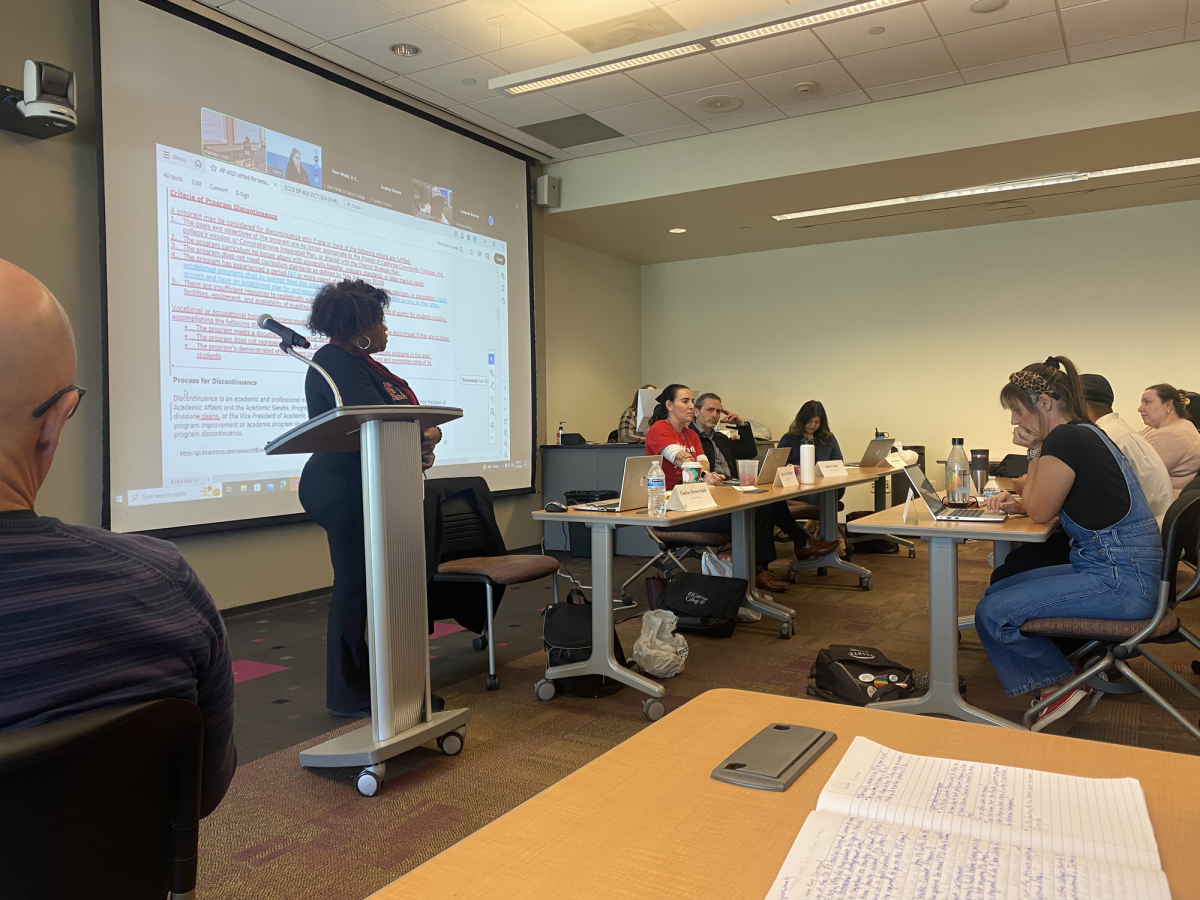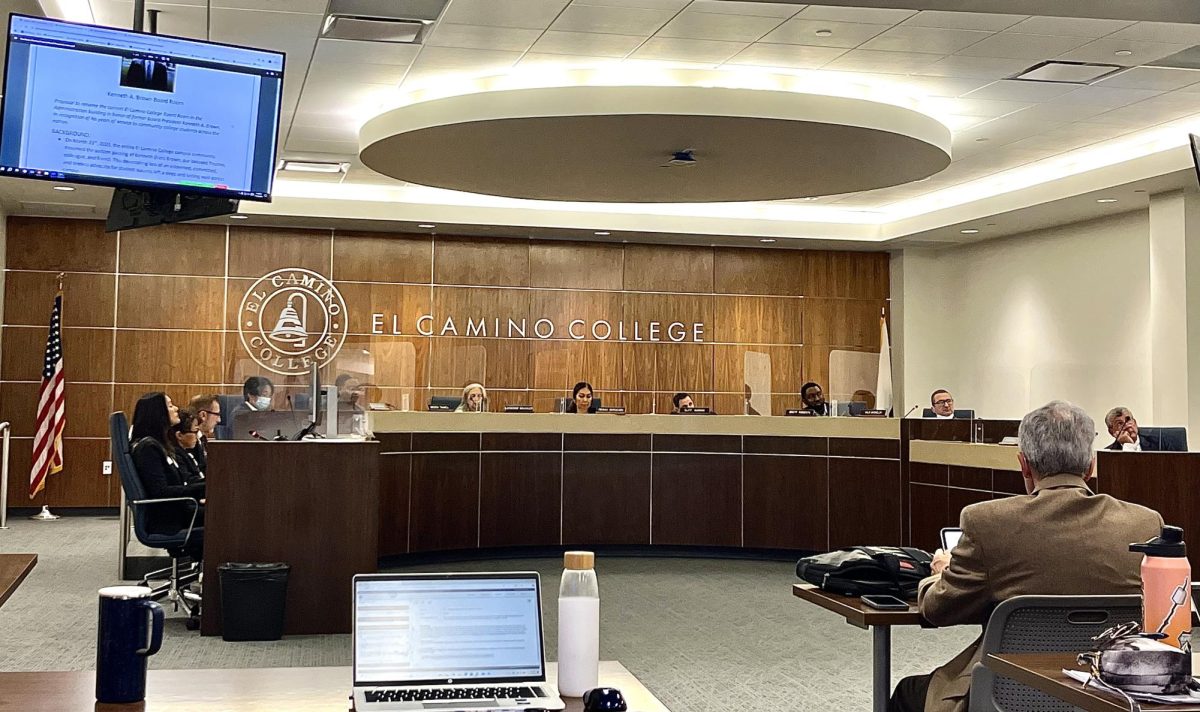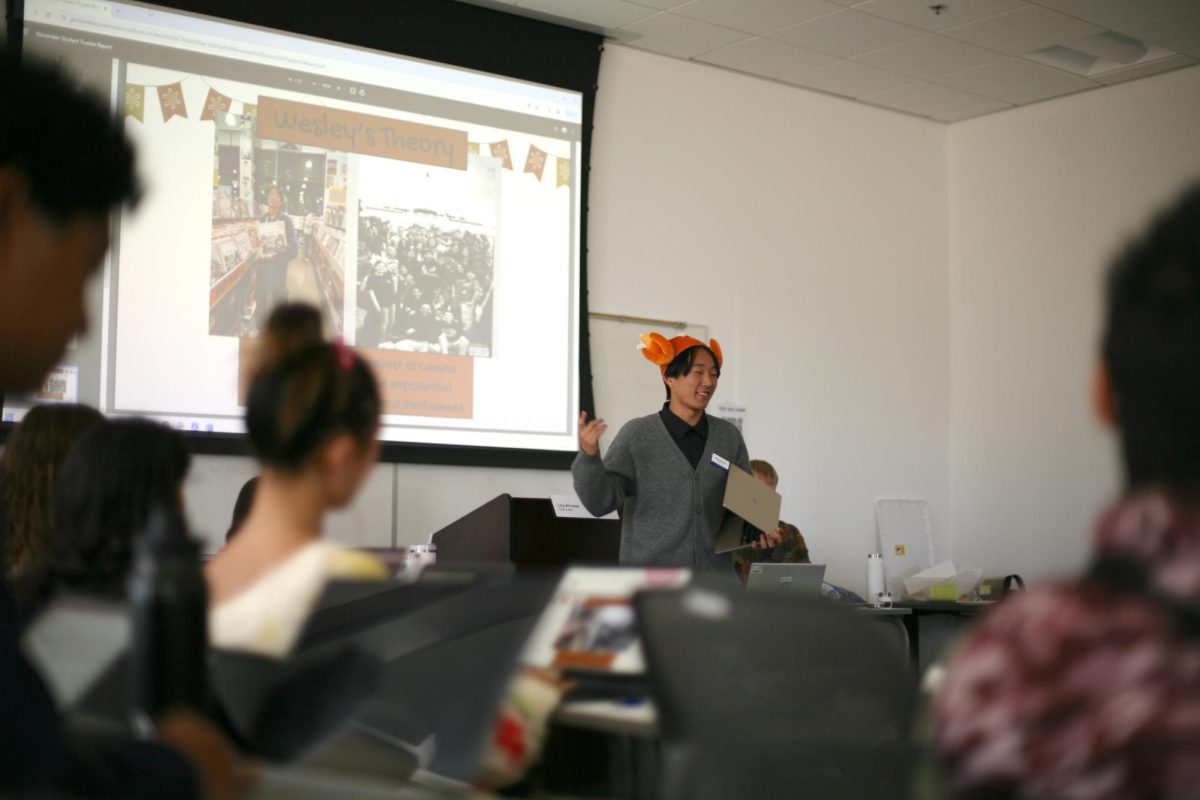Final adjustments to EC’s 2012-2013 budget have been made but major questions remain in the wake of uncertainty over the fate of Proposition 30, an EC administrator said.
The college is faced with a $7.3 million loss in state funding if Gov. Jerry Brown’s proposition 30 tax initiative fails to pass during the November elections, Jo Ann Higdon, vice president of administrative services, said.
“If the proposal does not pass there will have to be major reductions in course offerings,” Higdon said.
Up to 300 class sections could be cut from the remaining year if Proposition 30 fails, but the exact number that would be cut was unknown, she said.
Higdon said that spring semester could take the brunt of the cuts but that summer and fall semesters would not be greatly impacted.
“We really have not cut out summer and fall sections by any significant amount,” Higdon said. “What we have done is enforce our general rule that a class has to be pretty full for us not to cancel it.”
In a speech to faculty, President Tom Fallo said the college planned to “cut back” to its full time student cap, which is currently budgeted for around 18,000 students.
“We’re probably not going to have any extra FTES (full time equivalent students),” Fallo said. “That’s what Jack Scott (California Community Colleges Chancellor) said, he said ‘you go over cap (the amount of FTES the state is willing to fund), the legislature looks at us and says you don’t need as much money.’”
The 2012-2013 general unrestricted fund was budgeted at $117.3 million, which showed a $7.3 million reduction from the $124 million budgeted for 2011-2012.
Higdon said the $7.3 million had to be taken from the budget so that the college was prepared for the “worst case” if Proposition 30 fails.
According to data in the budget the $7.3 million cut was a combination of savings from eliminating class sections during fiscal year 2011-2012, restructuring of employee positions, reducing election costs, reducing administrative costs, and transferring funds from the school’s budget reserve to make up any gap.
Another budget issue that had concerned faculty was the possibility of pay and furlough reductions, but this issue had been resolved, Fallo said.
“We’ve withdrawn any salary reductions and or furloughs based on budget,” Fallo said, which was immediately followed by muted applause from faculty.
Recently Standard & Poor’s credit rating agency downgraded the college’s general obligation bond outlook from stable to negative due to the planned reductions to the school’s general reserve over the next few years, Fallo said.
Fortunately, the downgrade will not have any direct impact on the budget, Higdon said.
Higdon explained that there was a “firewall” between bond funds and the operating budget and since the school’s general obligation bond rating was still AA, there had been no problems selling the majority of the remaining $180 million of the 2002 Measure E bond, which funded the extensive building projects on campus.
A final budget consideration was the use of the 2011-2012 ending budget reserve of $21.1 million, which was projected to drop to around $15.5 million after transferring money to fill budget gaps, according to budget proposal document.
“I’m looking at the economics of probably three years from now. What happens?” Fallo said. “We have to get through three years so I’m trying to space our reserves over that three year period.”








